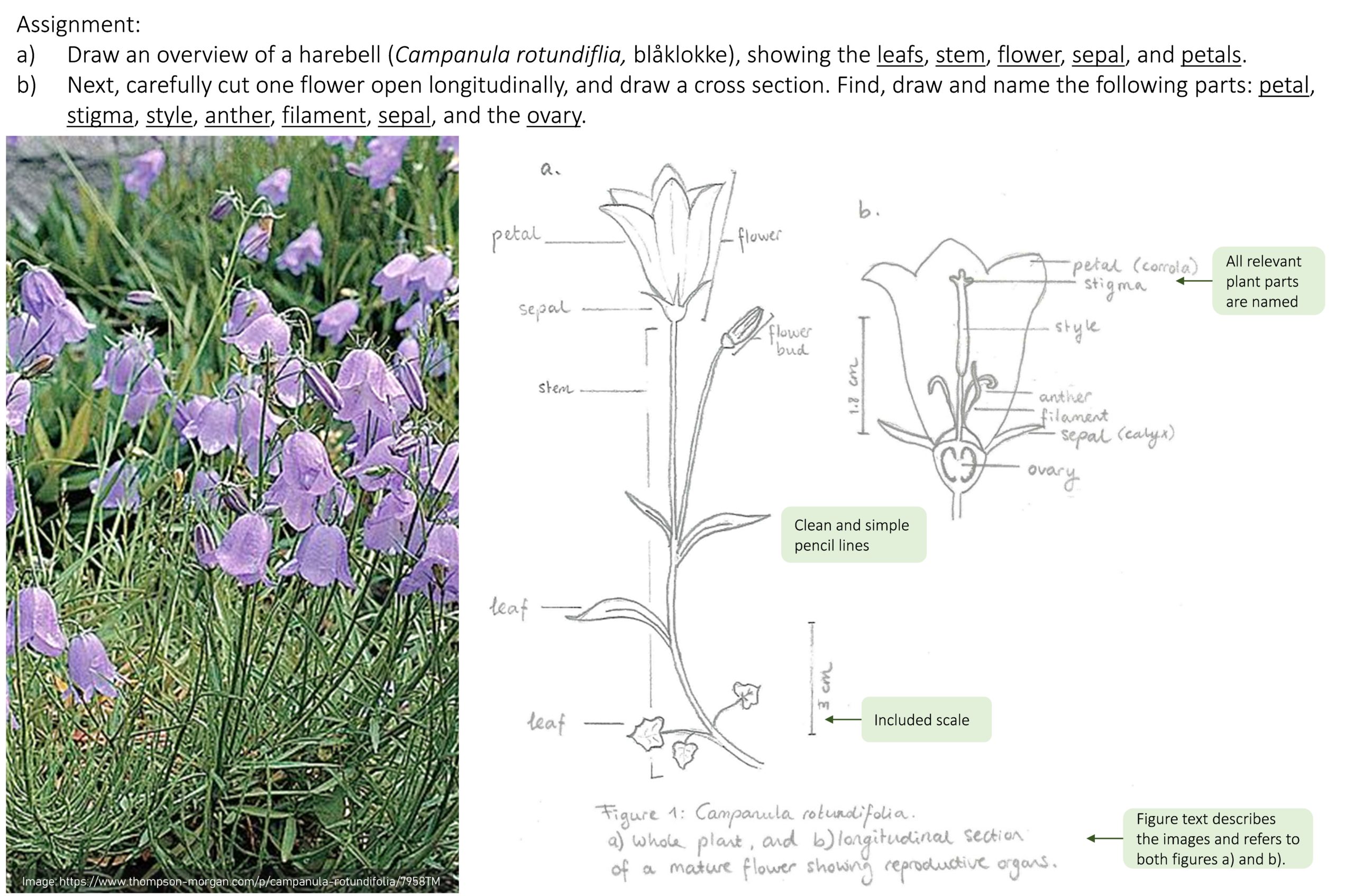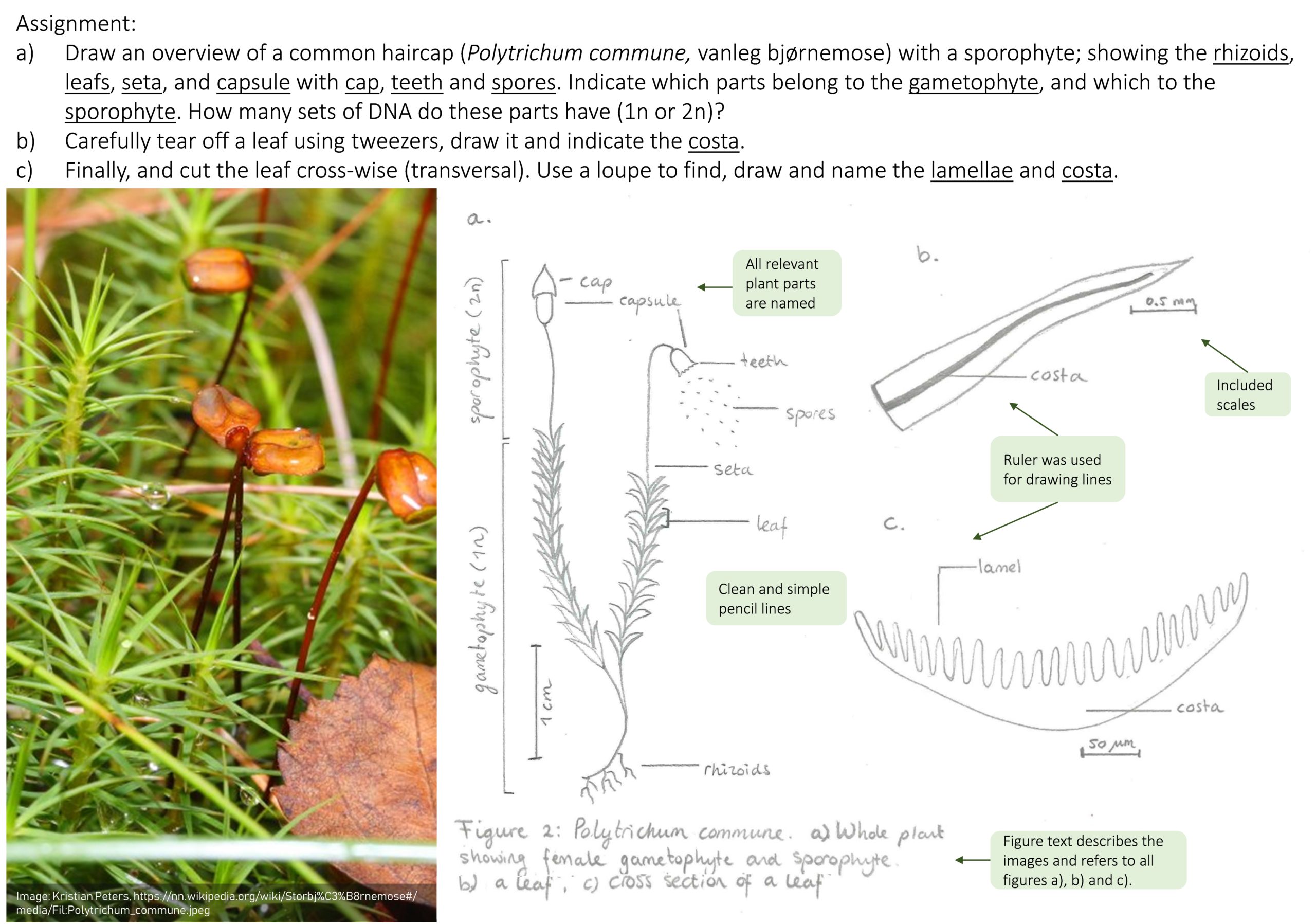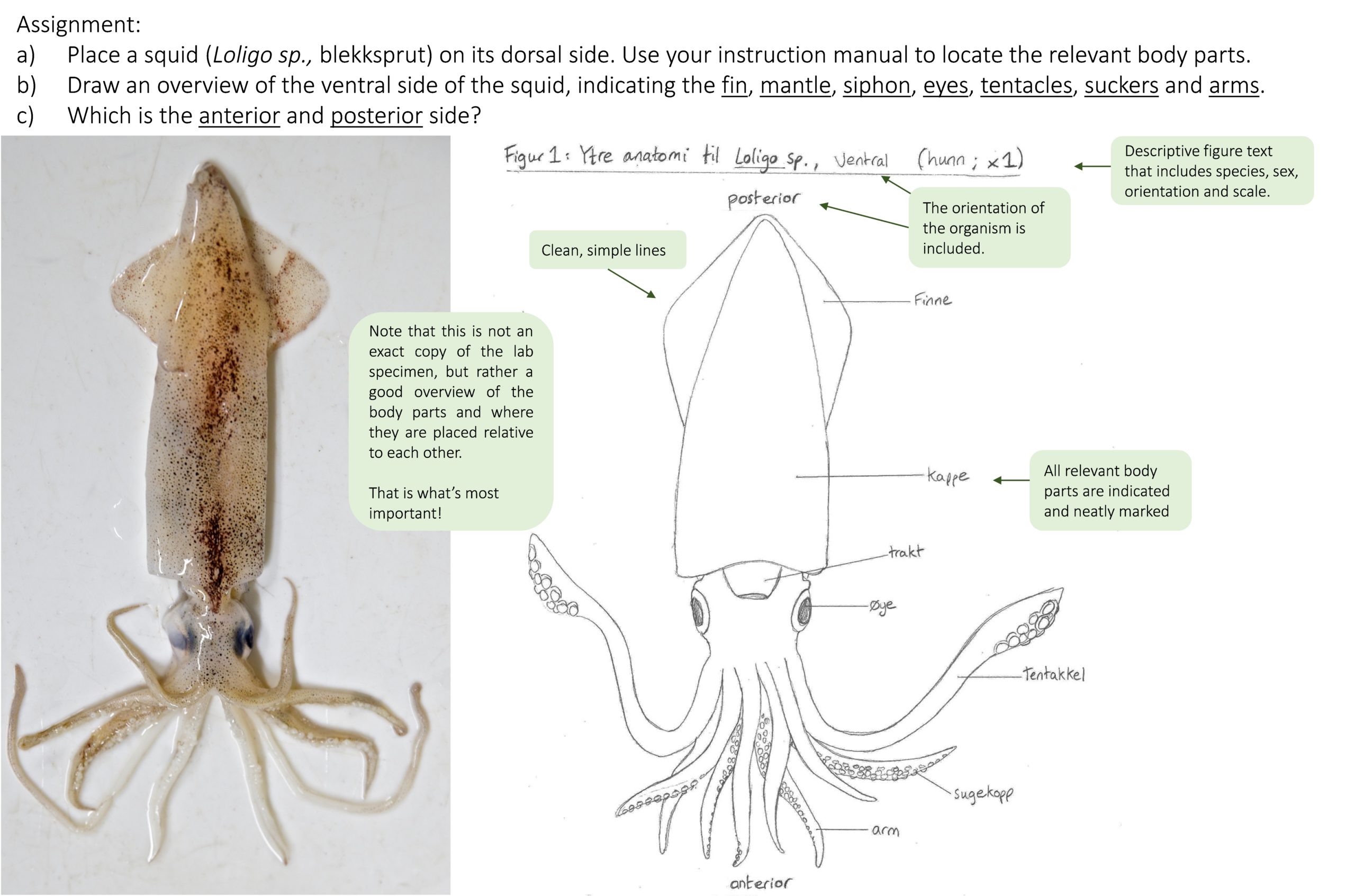What is a schematic drawing?
A schematic drawing is a simplified representation of something you’ve observed. In biology, this can be for example a plant, a cell or any other (part of an) organism that you are interested in. Biologists have used, and still use, schematic drawings on a regular basis to communicate their findings. After all, a picture says more than a thousand words! For example, drawings are used to describe new-found organisms, or to give a functional or simplified image of a complex process or structure.
Why do we still use drawings?
You may think that drawing organisms seems a little historical. Why draw if we can simply take a picture of something? In fact, there are several very good reasons why drawings are preferred over photos, and drawing thus is an essential skill for a biologist:
1. Communicating our findings to other people.
- Highlighting the important parts. Many organisms look very complex or at first sight. Using schematic drawings allows you to focus the attention on the parts of the organism that are important for your study. What are specific characteristics for this species or organism groups?
- Perfect-looking organisms are very hard to find. When we describe a species, we want to show what that species generally looks like. But, it can be incredibly hard to find a specimen that has all the features just right. This is also the reason why most species identification guides use drawings instead of photos.
2. Learning.
- You learn much more by actively engaging with the material by drawing it, than just looking at it. This is scientifically proven many times!
- Drawing an organism and its main characteristics forces you to look at your subject at a much higher level of attention. Therefore, it is an excellent way to understand and memorize how this organism is built up.
Read your assignment.
- Your assignment will specify what to draw and which parts to highlight.
- What else is needed? Do you need to make figure legend, and what information should it contain?
- Read well: If you have any more questions, ask your teacher or teaching assistant.
Draw what you see.
- Each organism is different – do not simply copy the instruction drawing from your manual!
You don’t need to be an artist.
Drawing observations can seem daunting. But keep in mind that these are schematic drawings, which need to be functional rather than good-looking. The main point is to locate certain parts, the general shape and size they have, and where they are located in comparison to other parts. Most of the time, simple lines and shapes are all you need.
That being said, make sure to keep your drawing as tidy and clear as possible. This will greatly help the understandability of it!
Start drawing!
- 1. Find the main structures. Take a good look at your organism and ask yourself: what are the main structures? Where are they located in relation to other structures? What parts do I need to include so that the organism is recognizable? Can you find all the parts that you are asked to draw?
- 2. Draw the outlines of the main structures. Carefully draw the general shapes of your organism. Keep your pencil line thin at first, so you can make corrections easily. When you are happy with the general outline, you can make the lines stronger.
- 3. Add the smaller and more detailed structures. Continue by adding the important details and smaller structures of the organism. Remember to regularly look at the organism to see if you're not forgetting anything.
- 4. Final checklist. When you are satisfied with your drawing, don’t forget these things:
- • Check whether you included all the parts mentioned in the assignment.
- • Label the parts of the organism, if this is asked in the exercise. Use a ruler to keep it tidy!
- • Did you include enough detail so your organism is recognizable? Ask your teaching assistant if you are unsure.
- • Include a scale. Use a ruler!
- • Write a figure legend (if none is provided).
- • Include the orientation of the organism (dorsal/ventral, anterior/posterior etc.)





